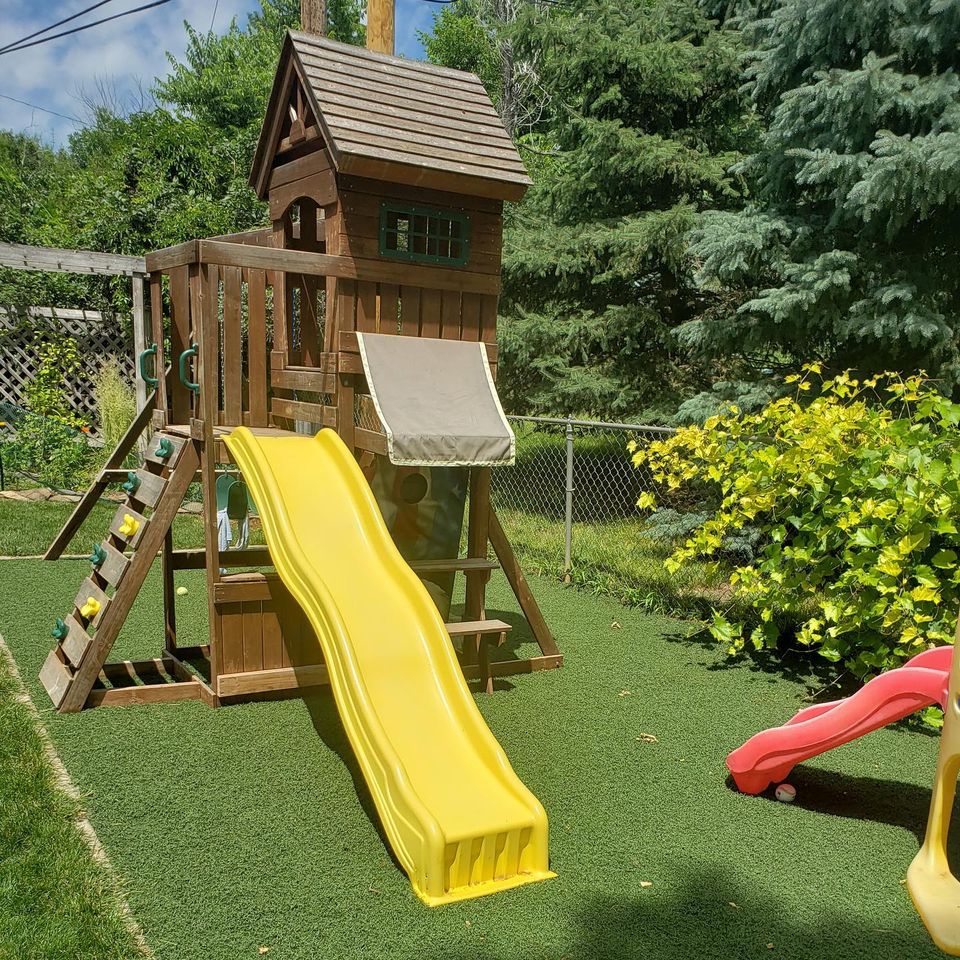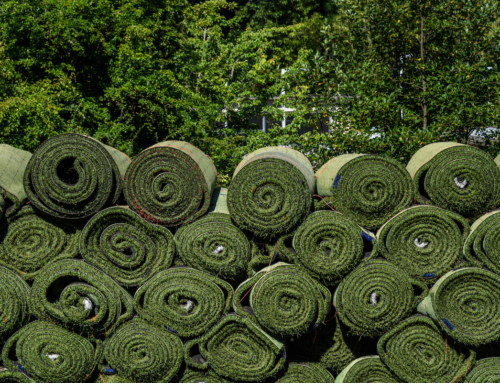Last Updated on January 1, 2021 by ReTurf
Thinking about utilizing artificial turf in a project?
Not sure where to start?
Understanding the terminology used when it comes to artificial turf can greatly streamline your communications with suppliers, installers, and professionals within the industry.

The Ultimate Guide To Artificial Turf Terminology
Artificial Turf:
Artificial turf is a product designed to match the look and feel of natural grass. It is comprised of synthetic fibers, dyes, and UV stabilizers.
Other Names:
- Synthetic Turf
- Artificial Grass
- Synthetic Lawn Turf
- Artificial Lawn Grass
- Synthetic Sports Turf
- Artificial Sports Grass
- Artificial Sod
- Synthetic Sod
- Artificial Lawn Sod
- Synthetic Lawn Sod
- Artificial Sports Sod
- Synthetic Sports Sod
Back Weight:
Back weight refers to the combined weight of the backing and the coating applied to it. This measurement is derived from the combined weight of these items per square yard of turf. This layer holds the artificial turf assembly together. The higher this weight measurement the more durable this layer is. Turf has an average back weight of 25 ounces.
Backing:
Artificial turf backing is the woven material used to weave the entire assembly together. It is the base of artificial turf material construction.
Base:
The base is the final layer (concrete, gravel, or compacted earth) that the artificial turf is installed on.
Cutter:
A cutter is much like it sounds, a device used to cut artificial turf. Cutters for this use can have a wide variety of shapes and uses. from standard box cutter types to specialized circle and long-distance cutters.
Drop Spreader:
A drop spreader is much like a sand spreader or a seed spreader. It is a wheeled device that is loaded with infill material and then moved across the artificial grass surface to apply the infill, evenly.
Face Weight/Front Weight:
This is a measurement derived from the total weight of yarn used per square yard of turf. This relates to the grass fibers.
Fibers:
Fibers refer to the individual artificial grass blades.
Gauge:
Gauge refers to the distance of the stitching between rows of the yarn. Relates to density.
Glue Box:
A glue box is a device that allows the user to insert a roll of seam tape, which runs through a glue reservoir, which makes seaming artificial turf more streamlined, expedient, and professional.
Grain:
Grain refers to the directional lay of the artificial turf blades.
Gripping Tongs:
Gripping tongs, or similar tools, are tools that allow you to grab and stretch artificial turf panels into place.
Infill:
Infill is a granular product that is spread over the top of the artificial turf to help support the grass blades and provide a cushion. The infill can be made of rubber, sand, and other man-made synthetic materials.
Joint:
The joint is where the seams meet from adjoining sections of artificial turf.
Panel:
Panel refers to a section of turf.
Pile:
Pile is the name given to the artificial turf grass blades when referring to length and direction.
Pile Direction:
Like grain, this refers to the direction in which the artificial turf grass blades lay.
Pile Height:
Pile height refers to the blade height of the individual blades of synthetic grass. Generally applied to the longest of the pile strands.
Roll:
Artificial turf is sold in rolls. These rolls are defined by length and width.
Seam:
The seam is the edge at which two pieces of artificial turf are joined together.
Seam Tape:
Seam tape is utilized under the edges of the adjoining artificial turf edges to create the seam with the application of glue. It is the bonding strip bridging the two.
Slit Film:
Slit film is a term to refers to artificial grasses (generally used in sports fields) which are created by cutting slits into a single large piece of material. This is in contrast to having individual grass fibers weaved in. The reason for slit film is for its durability under heavy use, it actually gets more comfortable over time due to how it breaks down, and it helps retain the infill better through what is known as a “canopy”. The canopy in slit film refers to the fact that the grass blades (since one continuous piece of material) actually loop back down to the base.
Stitch:
Stitch in artificial turf referees to the actual rows of stitching in the artificial turf panels.
Surface:
The surface refers to the foundation in which the artificial turf sits. This can solely be the base layer, or a sub-layer beneath – depending on the site needs.
Thatch:
Thatch, or thatching, is a part of the artificial grass blade construction. This is generally shorter supporting blades, sometimes colored brown to mimic the base of natural grass and to provide a more natural feel.
Total Weight:
This is the weight per square yard of the combination of both the back and front (face) weight.
Tuft:
Tuft is a collection of stitched grass fibers held together at a base.
Turf Adhesive:
Turf adhesive is a specialized glue utilized to seam together artificial grass panels alongside seam tape.
Yarn:
Yarn is the material used to create the synthetic grass fibers. This can be comprised of nylon, polyethylene, or polypropylene materials.



